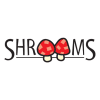Uncategorized
Magic mushrooms and acid: What are the differences?
Written by Emma Stone
Magic mushrooms, or shrooms edibles, and LSD, or acid, are two of the most common psychedelics and they have a lot of similarities. Both are recognized as classic psychedelics, with a meaningful influence on science and culture, and both have been identified as physiologically safe with a low risk of sparking dependency in consumers. What’s more, mushrooms and LSD are serotonergic hallucinogens, so their primary mechanism of action is on serotonin receptors in the brain.
But do these similarities mean shrooms and acid are more or less interchangeable? How do shrooms stack up against acid when it comes to effects, ingestion method, dosage, onset time, and trip duration? What distinguishes an acid trip from a mushroom trip, if anything at all?
How are shroom and acid trips similar?
Psychedelic science is currently regaining momentum after decades of stigmatization. While the research exploring the effects of mushroom and LSD trips is still nascent, there’s a growing clinical interest in unpacking the specific experiences induced by each.
In one 2019 survey, LSD and psilocybin were found to produce the most similar effects of all psychedelic drugs surveyed. The study included 76 different questions about the experience, and researchers noted no significant differences between reports of LSD and psilocybin trips.
Consumers often have overlapping experiences with both drugs. Both LSD and shroom trips are often characterized by:
- Distorted perceptions of time
- Hallucinations
- Visual fluidity (seeing stationary objects move or melt)
- An altered sense of smell, taste, or touch
- Feelings of unity with others and the surrounding world
- Refreshed perspective on life or problems
Some of the more unwelcome aspects common to both shroom and acid trips include paranoia, fear of death, elevated heart rate and blood pressure, and sweating.
In another study, both LSD and psilocybin were significantly more likely to induce a transcendental experience than other drugs such as MDMA, cannabis, cocaine, or opiates.
And when it comes to beneficial therapeutic effects, the similarities keep mounting. Research on animals and healthy human volunteers consistently showthat both psilocybin and LSD are capable of delivering lasting anxiety-reducing, antidepressant, and anti-addictive effects.
How are shroom and acid trips different?
While similarities abound between the two psychedelics, seasoned recreational consumers point out some subtle and not-so-subtle differences that also distinguish them. The overwhelming consensus appears to be that LSD induces a more stimulating or uplifting high, while shrooms deliver a more mellow, chilled-out trip.
Many individuals report a stronger sense of a body high while under the influence of mushrooms, while acid is perceived as a more cerebral experience. Nausea can sometimes accompany mushrooms, again suggesting a more noticeable load on the body.
There’s also a perception that shrooms are linked to a more introspective, reflective experience that can promote self-healing or help one work through issues. LSD, on the other hand, is seen as more fun and energizing. As one tripper articulated, “Shrooms for fixing something and LSD for going trippy mode.”
LSD consumers often experience more intense trips under the influence of LSD—both extremely good experiences and more troubling ones too. For this reason, experts stress how it’s crucial it is to get set and setting right. The right mindset, context, and environment can lead to a positive experience; a bad mindset, context, or environment can result in a bad trip. The same goes for mushrooms too.
Consumers have also logged differences in the comedown of both substances, as the trip begins to wear off and the afterglow sets in. Shrooms are generally associated with a quicker comedown, while LSD consumers report effects can linger for a day or more after, making sleeping and eating difficult.
